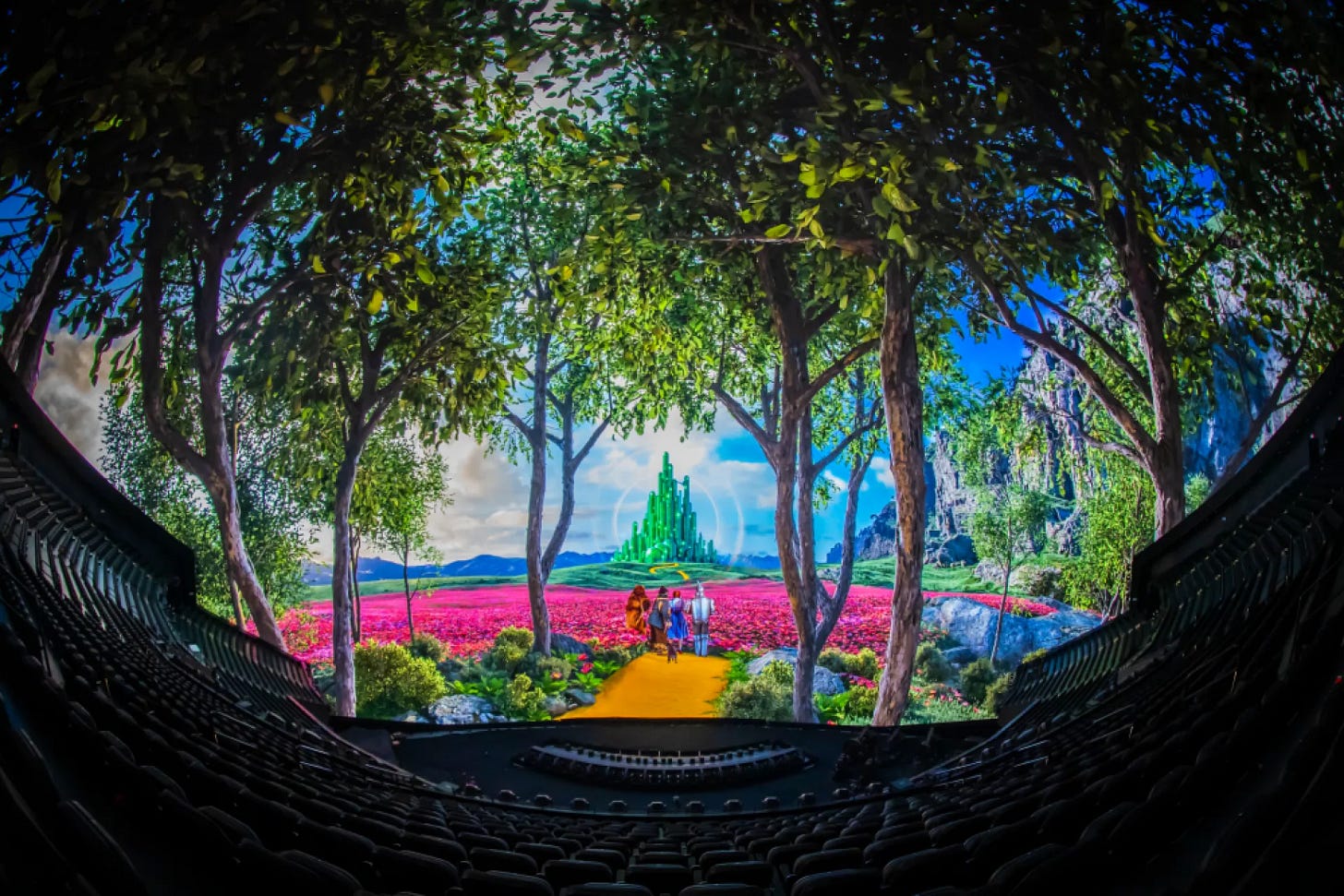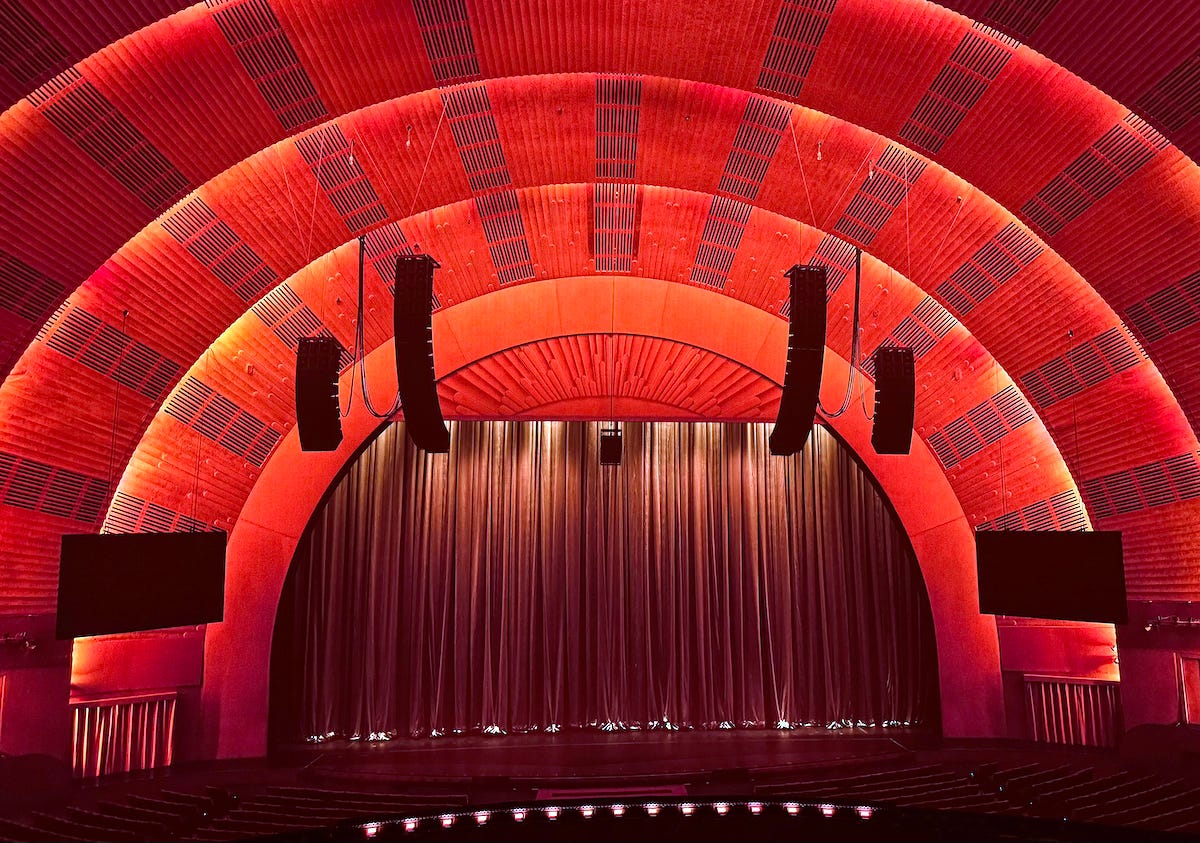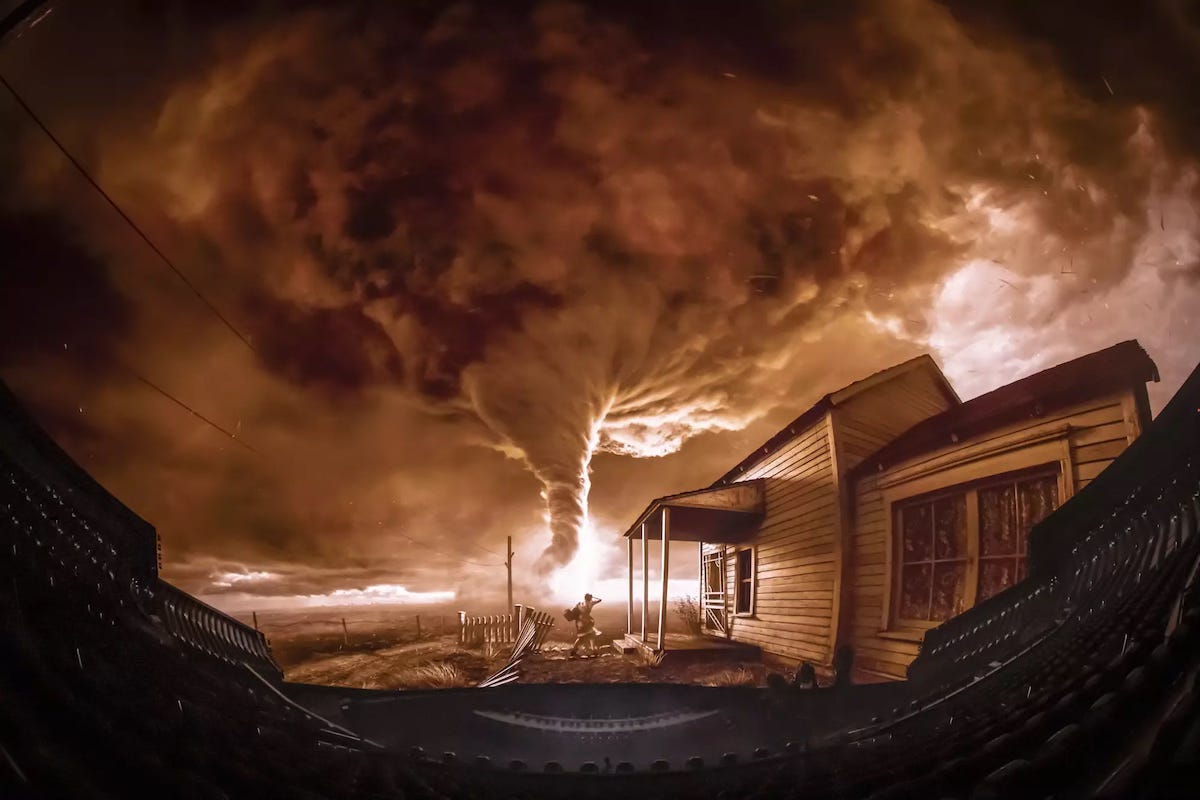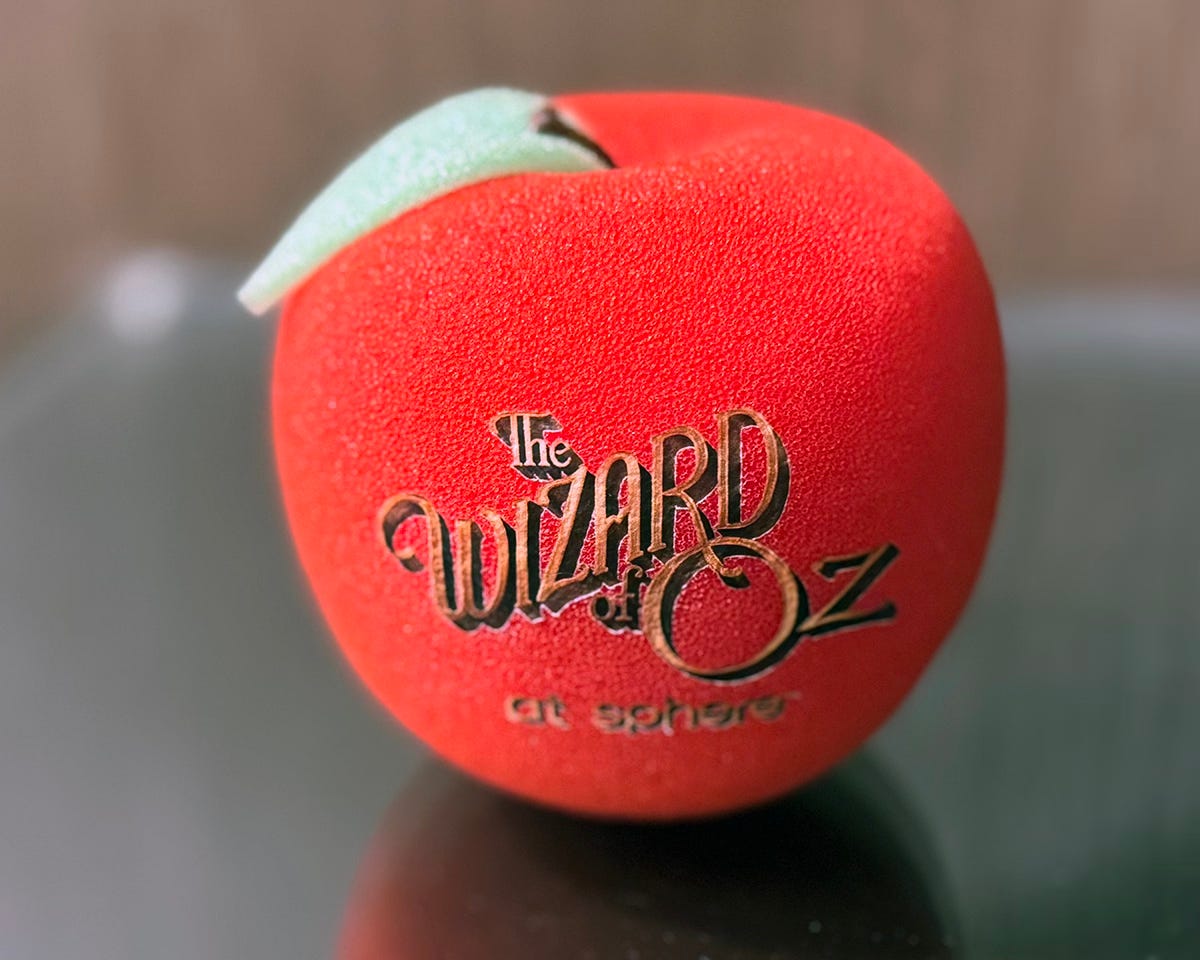I have a feeling we’re not in Vegas anymore
The Wizard of Oz at Sphere blew me away
4.25 (out of 5)
Up to this point, the Sphere in Las Vegas has been using its massive wraparound dome screen to show original content that accompanies performances by bands such as The Eagles and U2 as well as Postcard from Earth, a multimedia experience and film by Darren Aronofsky, that was created exclusively for the highly unique venue. But in late August, The Wizard of Oz at Sphere debuted. It may seem curious to present a film that first opened in 1939 to showcase the world’s largest and highest resolution LED display. But this digitally rendered, AI-enhanced, 4D presentation takes audiences down a decidedly different yellow brick road than the one that folks first encountered some 86 years ago.
The fun begins in the cavernous lobby where Oz artifacts beckon guests. Imagery of the desolate Kansas prairie, depicted in glorious black & white, runs along the sides of the venue’s long, steep escalators and is occasionally punctuated by Toto-toting meanie Almira Gulch (played by Margaret Hamilton, who later becomes the Wicked Witch in the film) riding her bicycle. Only the middle section of the vast, 17,600-seat venue is used for the presentation, presumably to optimize viewing angles. While waiting for the film to begin, the audience can hear an orchestra playing snippets of the famous score as it tunes up. Although it is only two years old, the Sphere appears to look like a grand, old Radio City Music Hall-like theater. There is an orchestra pit and speakers and large monitors hang from the ceiling above the stage. Or do they?
The lights dim, the curtain rises, and the opening of the film is projected onto a conventionally sized screen at the rear of the stage. Then the first wow moment happens as the movie breaks the barriers and fills the domed, 160,000-square-foot wraparound screen. It’s a throwback to the opening sequence of another breakthrough in filmed entertainment, “This is Cinerama.” That vintage theater? It’s all an illusion. The stage, the retrofitted speakers and monitors, the opera boxes, and the shmootz-tinged ceiling vents are startlingly convincing digital projections made possible by the enormous, 16K x 16K LED display. They all magically disappear and are replaced by the movie that envelops the audience.
I’ve never seen “The Wizard of Oz” in a movie theater. When I was a kid, I looked forward to the film’s annual broadcast on network television. At first, I didn’t know that when Dorothy comes to after the tornado descends on her family’s farmhouse and whisks her away, the film switches from the black & white Kansas landscape to the Technicolor Land of Oz. That’s because for many years, this boomer watched it on a puny, 19-inch black-and-white TV. I was missing out on the experience. (I was, nevertheless, transfixed as a young child and, like virtually everyone else who has ever seen “Oz,” consider it one of my favorite movies.)
Suffice it to say, nobody’s ever experienced “The Wizard of Oz” like this. With the gigantic screen filling my field of vision, it was like I stepped into my folks’ old television and joined Dorothy and her pals on their quest to see the wonderful wizard. It may sound counterintuitive, but by expanding the film to gargantuan proportions, it becomes oddly intimate. The theater and the rest of the audience fade away, and viewers are immersed in the action with the characters seemingly alongside them. Every ruby-red sequin and nostril hair is there to be closely perused.
In-theater effects help enhance the illusion. For example, the Sphere’s tricked-out haptic seats jolt audience members’ whenever the Wicked Witch appears. Dimensional Day-Glo butterflies join their film counterparts as do drone-powered flying monkeys. My family and I scored one of the prized foam apples that drops into the audience when Dorothy encounters the cantankerous apple tree. But the most you-are-there moment happens during the movie’s tornado scene. Powerful fans blew paper leaves throughout the theater and mussed whatever hair I have left while tushy-tingling shockwaves sent me somewhere over the rainbow. Sure, theme park fans are familiar with 4D attractions, but there has never been an immersive park experience of this scope, scale, or length.
Also helping to transport the audience on this multi-sensory journey to Oz is the presentation’s pristine soundtrack, which was digitally restored. The film’s songs, which are part of our collective conscious, were remastered, and the music was re-recorded to take advantage of the Sphere’s revolutionary sound system. Using what’s known as 3D beam forming and wave field synthesis, the same proprietary technology that targets each seat with optimized sound for the venue’s live concerts delivers glorious sound that sonically places viewers in the middle of the action.
In order to convert the film, which was originally shot for a 4:3 screen format, to accommodate the Sphere’s expansive, ultra-high-definition, domed screen, the project’s creators teamed up with Google Cloud to use AI. This has generated some controversy among film purists. In addition to creating 16K resolution, the technology was used to generate performances from peripheral characters who had previously been offscreen. Scenes were trimmed, and the film’s runtime was cut from 102 minutes to about 75 minutes. I get the concern, but the outcry seems overblown to me. The Wizard of Oz at Sphere is just that: A reimagining of the classic movie specifically designed for the Vegas venue. The original “Oz” remains untouched and available for folks to view everywhere else.
All of the AI rejiggering, re-recording of music, 4D enhancements, and other work reportedly cost about $100 million. Keep in mind that the film is being shown at one location (albeit at a location, which itself cost over $2 billion to build). But also keep in mind that the cost to see The Wizard of Oz at Sphere is considerably higher than a show at the neighborhood multiplex, with tickets averaging about $150. Is it worth it? Well, it is a one-of-a-kind presentation in a one-of-a-kind place. (Another Sphere is in the works for the UAE, and there may be more on the way.) By all accounts, demand has been strong, and even at reduced capacity, researchers say that the modern-day take on the classic movie is generating $2 million a day. With that kind of success, expect to see more reformatted films coming to the Sphere.
Would you want to see The Wizard of Oz at Sphere? What other classic films might the Sphere consider for future showings?







Wow, great review Arthur! I've heard so many articles around the AI controversy with this experience that it's refreshing to hear a positive take on the attraction.
I think like any new technology, there are going to be good and bad uses for AI. Right now we're in the early phases where some of it's clearly wrong (like utilizing stolen work from actual artists) and cases where it does something genuinely cool (like the Beatles using it to restore audio for their Now and Then single).
I don't know where the ethical boundaries lie with something like this that's a singular experience, and frankly I'm content to just let experimentation play out for a few years. I think labeling all AI usage as "bad" is as ill-informed as labeling it all as "good." It's going to take time to figure these questions out. Glad you had a good time!